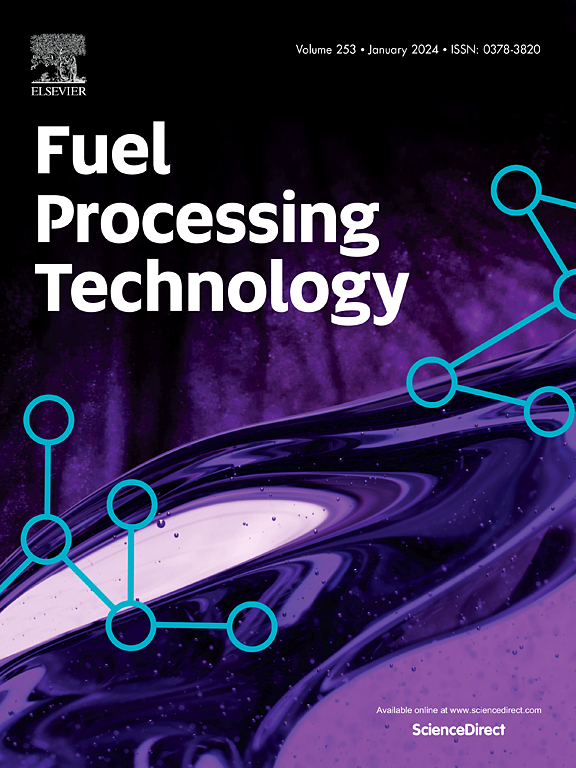A kinetic investigation of conversion of nuclear graphite by hydrogen and water vapor at absolute pressure variation up to 40 bar
IF 7.2
2区 工程技术
Q1 CHEMISTRY, APPLIED
引用次数: 0
Abstract
This study investigates the thermochemical conversion of release-measured nuclear-grade graphite recovered from the thermal column of a decommissioned nuclear reactor in the context of the disposal of this nuclear waste. The focus is on determining kinetic data for graphite conversion to the gas phase and the influence of absolute pressure on kinetic parameters using TGA. During gasification with H2 and for all tested pressures (1, 5, 20 and 40 bar) an activation energy of approx. 268 kJ/mol was determined for the kinetically-controlled regime (Regime I), and approx. 134 kJ/mol for the pore diffusion-controlled regime (Regime II). For hydrogasification of synthetic graphite (reference material), Regime I with an EA of approx. 140 kJ/mol and Regime III (mass transfer-controlled) with an EA of approx. 9 kJ/mol were observed. Due to the absence of any internal surface area, synthetic graphite showed no Regime II, rather Regime I passed directly into Regime III. An increase of pressure in order to accelerate the conversion was only successful up to a certain point. Further increasing the pressure even led to a lower reaction rate can even be observed. For the gasification of nuclear graphite with water vapor, Regime I was found for 1, 5, 20 and 40 bar. The activation energy was approx. 214 kJ/mol.
在绝对压力变化高达40bar时,氢和水蒸气转化核石墨的动力学研究
本研究调查了从退役核反应堆热柱回收的释放测量核级石墨在该核废料处置背景下的热化学转化。重点是确定石墨转化为气相的动力学数据和绝对压力对动力学参数的影响。在氢气气化过程中,在所有测试压力(1,5,20和40bar)下,活化能约为。动力学控制体系(体系I)为268 kJ/mol,近似为268 kJ/mol。对于合成石墨(参比物质)的加氢气化,体系1的EA约为。140 kJ/mol,状态III(传质控制),EA约为。9 kJ/mol。由于没有任何内表面积,合成石墨没有表现出状态II,而是直接进入状态III。为了加速转换而增加压力只是在一定程度上取得了成功。甚至可以观察到,进一步增加压力甚至导致反应速率降低。对于核石墨与水蒸气的气化,在1、5、20和40 bar的条件下发现了状态1。活化能约为。214焦每摩尔。
本文章由计算机程序翻译,如有差异,请以英文原文为准。
求助全文
约1分钟内获得全文
求助全文
来源期刊

Fuel Processing Technology
工程技术-工程:化工
CiteScore
13.20
自引率
9.30%
发文量
398
审稿时长
26 days
期刊介绍:
Fuel Processing Technology (FPT) deals with the scientific and technological aspects of converting fossil and renewable resources to clean fuels, value-added chemicals, fuel-related advanced carbon materials and by-products. In addition to the traditional non-nuclear fossil fuels, biomass and wastes, papers on the integration of renewables such as solar and wind energy and energy storage into the fuel processing processes, as well as papers on the production and conversion of non-carbon-containing fuels such as hydrogen and ammonia, are also welcome. While chemical conversion is emphasized, papers on advanced physical conversion processes are also considered for publication in FPT. Papers on the fundamental aspects of fuel structure and properties will also be considered.
 求助内容:
求助内容: 应助结果提醒方式:
应助结果提醒方式:


